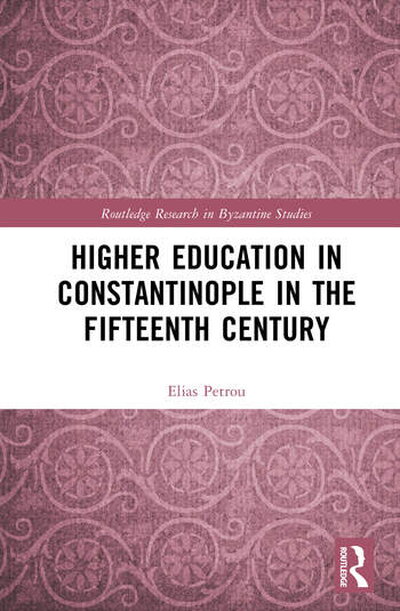

Elias Petrou, Higher Education in Constantinople in the Fifteenth Century (Routledge, 2026) explores the intellectual life and educational institutions of fifteenth-century Constantinople, a period often overlooked in the history of Byzantine scholarship. While the twilight of the empire is frequently associated with decline, this book demonstrates that it was, in fact, a time of vibrant intellectual activity, laying crucial groundwork for the Renaissance in the West. Drawing on a wide array of primary sources—including manuscripts, codices, letters, and treatises—this book reconstructs the networks of teachers and students, the transmission of Classical Greek texts, and the methods of instruction that defined higher education in late Byzantium. It presents the cultural landscape of the final Byzantine century as a dynamic space of learning where Classical heritage was not merely preserved but reinterpreted and reactivated in a world on the brink of transformation. This is the first comprehensive account of Byzantine higher education during this era, illuminating a missing link in the story of the Renaissance and the survival of Hellenic knowledge.
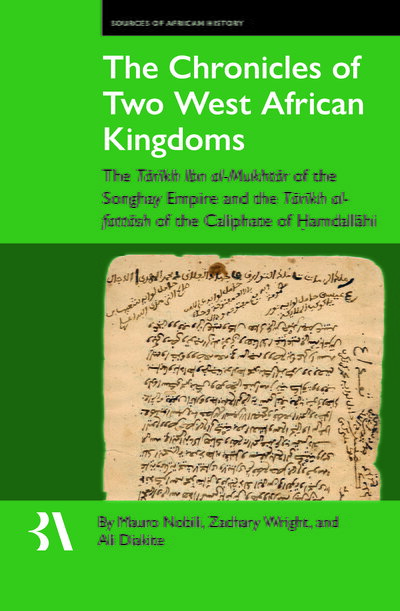
Mauro Nobili, Zachary V. Wright, and H. Ali Diakite, The Chronicles of Two West African Kingdoms: The Tarikh Ibn Al-Mukhtar of the Songhay Empire and the Tarikh Al-Fattash of the Caliphate of Hamdallahi (Liverpool University Press: Fontes Historiae Africanae, 2025) ~ This book presents a new reading of West African history from the fifteenth to the nineteenth centuries. Based on close analysis of Arabic manuscripts from Timbuktu and other regions, this volume provides key historical context from the Songhay Empire through the Caliphate of Hamdallahi, along with translations and Arabic editions of the long-obscured Tarikh Ibn al-Mukhtar in parallel with the later production known as the Tarikh al-fattash. The central observation that emerges from these texts is that Muslim scholars in premodern West Africa, who saw themselves as constitutive to the powerful kingdoms in the Western Sudan, claimed almost unprecedented authority to shape reality through narration.
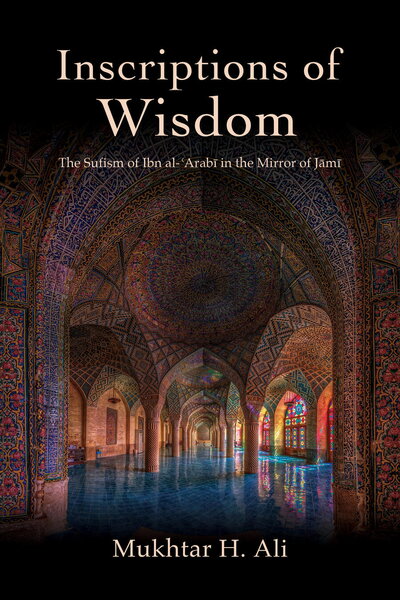
Mukhtar H. Ali, Inscriptions of Wisdom: The Sufism of Ibn al-ʿArabī in the Mirror of Jāmī (SUNY Press, 2025) ~ Inscriptions of Wisdom brings together, for the first time in English, two pivotal Sufi texts that illuminate Ibn al-ʿArabī's (d. 1240) celebrated work Fuṣūṣ al-ḥikam. The first, Naqsh al-Fuṣūṣ (the Inscription of the Fuṣūṣ), is Ibn al-ʿArabī's own distillation of Fuṣūṣ al-ḥikam, presenting a concise yet profound articulation of its core teachings. The second, Naqd al-nuṣūṣ fī sharḥ Naqsh al-Fuṣūṣ (texts commenting on Naqsh al-Fuṣūṣ), by ʿAbd al-Raḥmān Jāmī, is an anthology of carefully selected passages from the earliest and most authoritative interpreters of Fuṣūṣ al-ḥikam, enriched with Jāmī's own insights. Together, these works explore the quintessential knowledge and divine principles embodied by each of the twenty-seven major prophetic figures of the Islamic tradition, from Adam to Muhammad. If Fuṣūṣ al-ḥikam represents the culmination of Ibn al-ʿArabī's thought, then Naqsh al-Fuṣūṣ distills its very essence and inner mystery. Mukhtar H. Ali's meticulous presentation of the Fuṣūṣ al-ḥikam commentarial tradition—featuring the first complete English translation of Jāmī's Naqd al-nuṣūṣ, chapter-by-chapter analysis, and extensive notes on key Sufi terms and concepts—establishes this volume as a landmark study in Islamic metaphysics and Sufi thought.
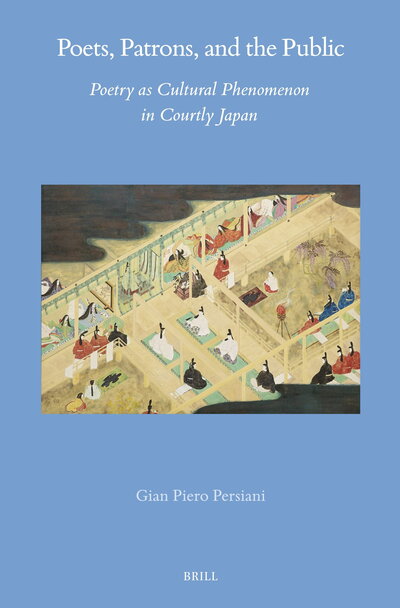
Gian Piero Persiani, Poets, Patrons, and the Public: Poetry as Cultural Phenomenon in Courtly Japan (Brill, 2025) ~ Waka poetry was all the rage in tenth-century, courtly Japan. Every educated person composed it, emperors and consorts sponsored it, and societal interest in it was at an all-time high. Persiani’s book offers an unprecedentedly broad and vivid portrayal of this season of literary flourishing, revealing the multitude of factors that contributed to it, as well as the social, political, and cultural reasons behind waka’s rise. Deftly combining sociological theory and social and intellectual history with insightful readings of a wealth of primary texts—some never before discussed in English—the book is both a history of waka in the Heian period and a study of Heian court society through the lens of waka.
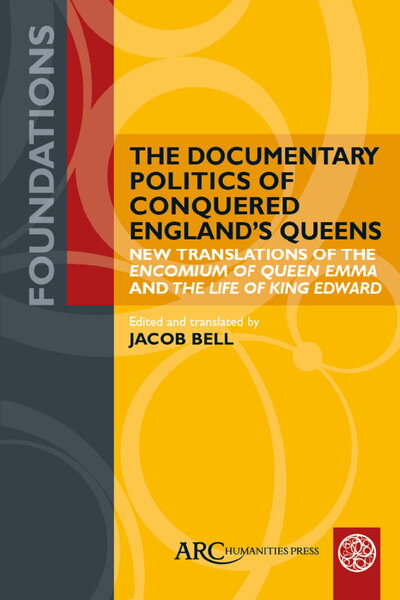
Jacob Bell (PhD 2023), The Documentary Politics of Conquered England's Queens New Translations of the "Encomium of Queen Emma" and the "Life of King Edward" (Arc Humanities Press, 2025) ~ This book provides new and approachable translations of two important medieval artifacts: the Encomium of Queen Emma and the Life of King Edward. Sponsored by royal women—Emma of Normandy, wife of two English kings and mother to two more; and Edith of Wessex, the wife of Edward the Confessor and sister to Harold Godwineson—these texts place the politics of history writing centre-stage against the backdrop of the Anglo-Scandinavian regime of Cnut the Great and the Norman Conquest of 1066. Readers will encounter the drama and pageantry of civil war, invasion, and resistance through the eyes of the queens behind the thrones.
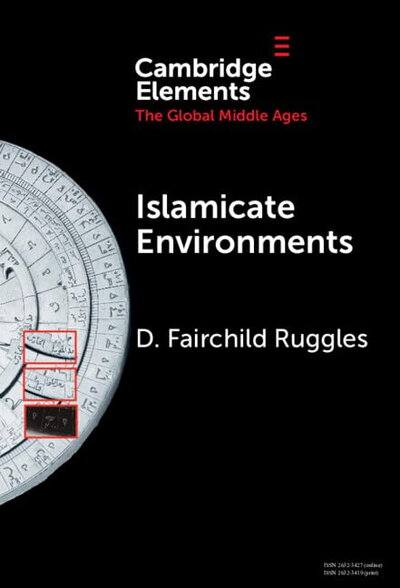
D. Fairchild Ruggles, Islamicate Environments: Water, Land, Plants, and Society (Cambridge, 2025)
Islam burst forth from Arabia in the seventh century and spread with astonishing speed and force into the Middle East, Asia and northern Africa and the Mediterranean. While its success as a dominant culture has often been attributed to military strength, astute political organization, and religious factors, this Element focuses on the environmental conditions from which early Islamic societies sprang. In the belt of arid land that stretches from Iran to the Maghreb (Spain and Morocco)-i.e. the territories of early Islam-the adaptation of natural water systems, landforms and plant varieties was required to make the land habitable and productive.
Martin Camargo, A Renaissance of Rhetoric in Late Medieval Oxford: Treatises of the Oxford Rhetoricians, 1364–ca.1435
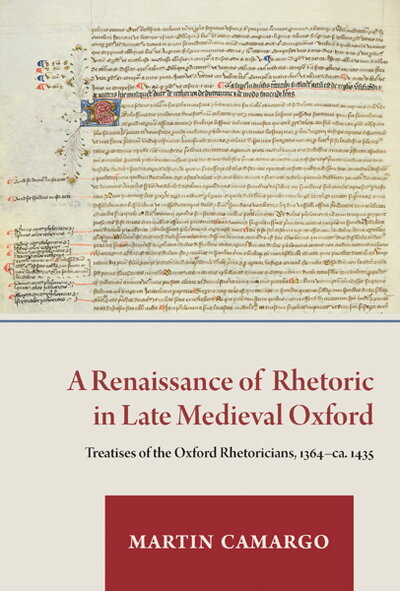
This book documents an unprecedented effort to produce new treatises on rhetoric at Oxford in the fourteenth and fifteenth centuries. Part 1 includes chapters on the origins, causes, and eventual decline of this "renaissance," as well as on the new textbooks and their authors, tradition and innovation in their rhetorical precepts, and the pedagogical contexts in which they were deployed. Part 2 consists of Latin editions and facing English translations of eight rhetorical treatises. Four of the Latin texts have never been printed before, and all eight are translated here for the first time.
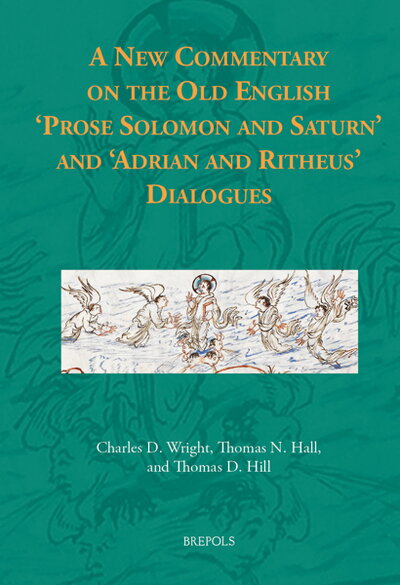
Charles D. Wright, Thomas N. Hall, and Thomas D. Hill, A New Commentary on the Old English 'Prose Solomon and Saturn' and 'Adrian and Ritheus' Dialogues (Brepols, 2024)
This volume, featuring the scholarship of three Illinois-affiliated medievalists led by emeritus professor and director Charlie Wright, explicates the curious lore transmitted in these two Old English dialogues: tracing the origins, transmission, and transmutations of each motif in early medieval sources and citing many previously unnoticed analogues. Literary and analysis is accompanied by a comprehensive survey of other early medieval Joca monachorum and related genres (both Latin and vernacular).
C. Stephen Jaeger, Medieval Humanism: Collected Essays (Italica Press, 2024)

These collected essays, some first published here, summarize the past fifty years of C. Stephen Jaeger’s work and thought. Its introduction, revisions, and updates also incorporate other scholars’ research over the past half-century to produce a fresh reinvisioning of European cultural history from 950 to 1150. Jaeger argues that this period was shaped by the emerging humanism of the early cathedral schools that proliferated from the second half of the tenth century and through educational innovations closely tied to the rule of Emperor Otto the Great. This humanism was characterized by the fusion of ancient Roman philosophy and ethical ideals with Christian teachings. Its influence in ecclesiastical and imperial administration was as profound as in philosophy, literary style, and social mores, influencing the poetry, art, architecture, philosophy, and moral teaching of the age.
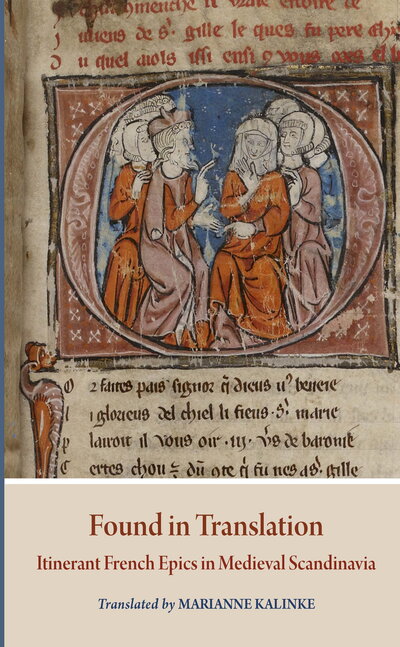
Marianne Kalinke, Found in Translation: Itinerant French Epics in Medieval Scandinavia (Pontifical Institute of Mediaeval Studies, 2024)
This splendid volume presents the first English translations of four late medieval Old Norse–Icelandic texts: Elis saga, Flóvents saga, Bevers saga, and Bærings saga. All of them are unusual in transmitting versions of Old French chansons de geste whose originals are no longer extant. They are the product of a remarkable combination of translation, redaction, revision, and adaptation and mark the development of a new genre, the riddarasaga or chivalric saga. As such, they cast significant light not only on the development of Icelandic literature but also on the scope and practice of medieval translation more widely. Marianne Kalinke’s superb translation of these extraordinary and fascinating works is complemented by discreet and thoughtful annotation, as well as a rigorous historical introduction that will be welcomed by scholar and student alike. -- Jürg Glauser University of Zurich and University of Basel
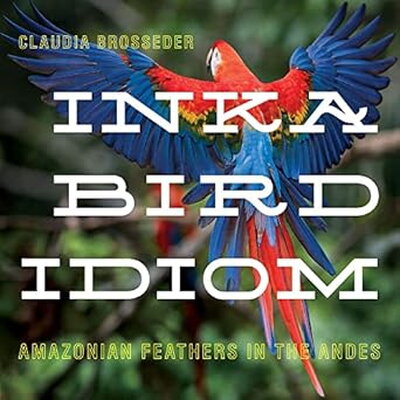
Claudia Brosseder, Inka Bird Idiom: Amazonian Feathers in the Andes (University of Pittsburgh Press, 2023)
From majestic Amazonian macaws and highland Andean hawks to tiny colorful tanagers and tall flamingos, birds and their feathers played an important role in the Inka empire. Claudia Brosseder uncovers the many meanings that Inkas attached to the diverse fowl of the Amazon, the eastern Andean foothills, and the highlands. She shows how birds and feathers shaped Inka politics, launched wars, and initiated peace. Feathers provided protection against unpredictable enemies, made possible communication with deities, and brought an imagined Inka past into a political present. Richly textured contexts of feathered objects recovered from Late Horizon archaeological records and from sixteenth- and seventeenth-century accounts written by Spanish interlocutors enable new insights into Inka visions of interspecies relationships, an Inka ontology, and Inka views of the place of the human in their ecology. Inka Bird Idiom invites reconsideration of the deep intellectual ties that connected the Amazon and the mountain forests with the Andean highlands and the Pacific coast.
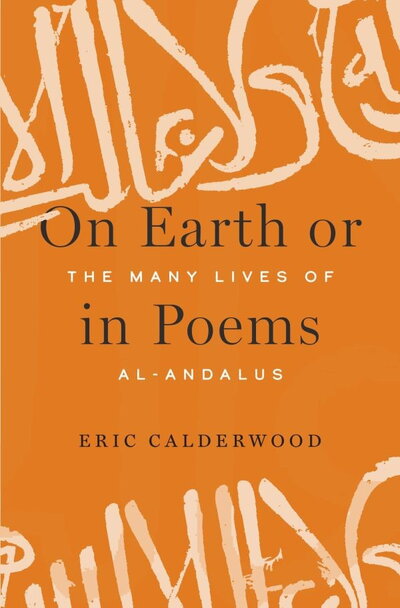
Eric Calderwood, On Earth or in Poems: The Many Lives of Al-Andalus (Harvard University Press, 2023)
During the Middle Ages, the Iberian Peninsula was home not to Spain and Portugal but rather to al-Andalus. Ruled by a succession of Islamic dynasties, al-Andalus came to be a shorthand for a legendary place where people from the Middle East, North Africa, and Europe; Jews, Christians, and Muslims lived together in peace. That reputation is not entirely deserved, yet, as On Earth or in Poems shows, it has had an enduring hold on the imagination, especially for Arab and Muslim artists and thinkers in Europe, the Middle East, and North Africa
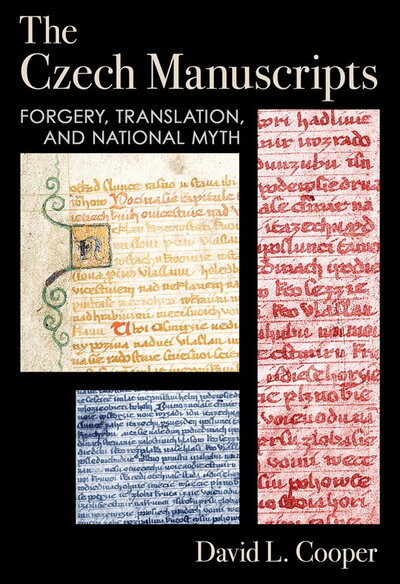
David L. Cooper, The Czech Manuscripts: Forgery, Translation, and National Myth (Cornell Unversity Press, 2023)
The Queen's Court and Green Mountain Manuscripts, discovered in 1817 and 1818, went on to play an outsized role in the Czech National Revival, functioning as founding texts of the national mythology and serving as sacred works in the long period when they were considered genuine.
A successful literary forgery tells a lot about what a culture wants and needs at a particular moment. One fascinating aspect of this story is how a successful fake was able to function in an integral way as part of the Czech cultural revival of the nineteenth century, both because it played to expectations and nationalist values and because it met real cultural needs in many ways better than genuine historical literary works and artefacts. Also fascinating is the vainglorious Václav Hanka, a prolific and dedicated forger who was likely the center of the conspiratorial ring that created the manuscripts and who went on as the librarian of the Czech National Museum to alter a number of others.
David Cooper analyzes what made the Manuscripts a convincing imitation of their Serbian and Russian models. He looks at how translation shaped their composition and at the benefit ofexamining them as pseudotranslations, and investigates the quasi-religious rituals and commemorative practices that developed around them. The Czech Manuscripts brings the Czech experience into the broader developments of European history.
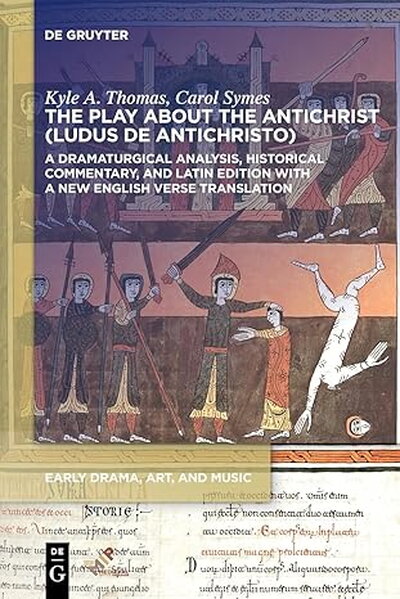
Kyle A. Thomas [PhD 2018] and Carol Symes, The Play about the Antichrist (Ludus de Antichristo): A Dramaturgical Analysis, Historical Commentary, and Latin Edition with a New English Verse Translation (DeGruyter, 2023)
The Play about the Antichrist (Ludus de Antichristo) was composed around 1160 at the imperial Bavarian abbey of Tegernsee, at a critical point in the power-struggle between the papacy and Emperor Frederick Barbarossa. This new translation and commentary reveals this drama to be strikingly representative of the role that theatrical performance played in shaping contemporary politics, diplomacy, and public opinion. It also shows how drama functioned as an integral component of the educational curricula of elite monastic institutions like Tegernsee, where political administrators and diplomats were trained, and how performance served as a common, connective lingua franca among monasteries in twelfth-century Bavaria.
In this new translation, Carol Symes provides the first full and faithful rendering of the play’s dynamic language, maintaining the meter, rhyme scheme, and stage directions of the Latin original and restoring the liturgical elements embedded in the text. Kyle A. Thomas, whose fully-staged production tested the theatricality of this translation, provides a new historical and dramaturgical analysis of the play’s rich interpretive and performative possibilities.
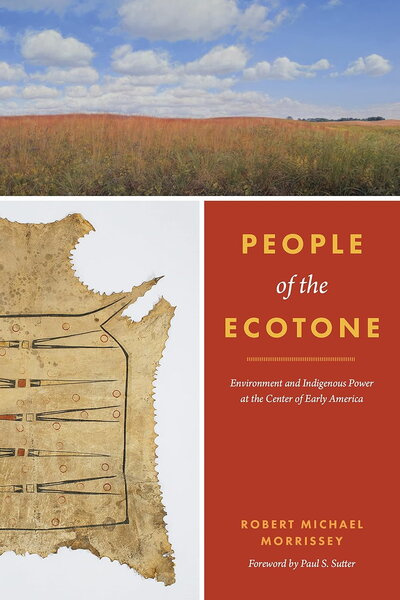
Robert Michael Morrissey, People of the Ecotone: Environment and Indigenous Power at the Center of Early America (University of Washington Press, 2022)
This book weaves together a history of Native peoples with a history of an ecotone to tell a new story about the roots of the Fox Wars, among the most transformative and misunderstood events of early American history. To do this, he also offers the first comprehensive environmental history of some of North America's most radically transformed landscapes―the former tallgrass prairies―in the period before they became the monocultural "corn belt" we know today.
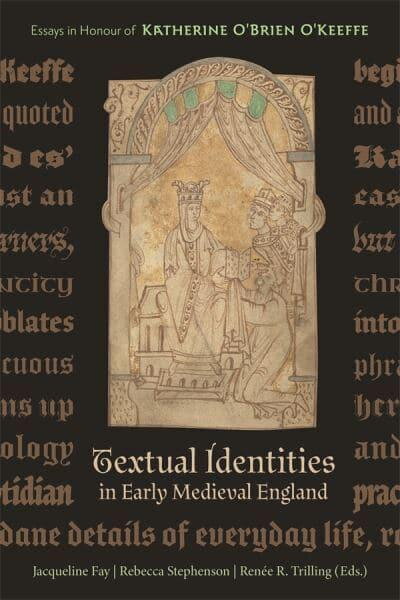
Textual Identities in Early Medieval England: Essays in Honour of Katherine O'Brien O'Keeffe, eds. Rebecca Stephenson, Jacqueline Fay and Renée R. Trilling (D.S. Brewer, 2022)
Throughout her career, Professor Katherine O'Brien O'Keeffe has focused on the often-overlooked details of early medieval textual life, moving from the smallest punctum to a complete reframing of the humanities' biggest questions. In her hands, the traditional tools of medieval studies -- philology, paleography, and close reading - become a fulcrum to reveal the unspoken worldviews animating early medieval textual production. The essays collected here both honour and reflect her influence as a scholar and teacher. They cover Latin works, such as the writings of Prudentius and Bede, along with vernacular prose texts: the Pastoral Care, the OE Boethius, the law codes, the Anglo-Saxon Chronicle, and Ælfric's Lives of Saints. The Old English poetic corpus is also considered, with a focus on less-studied works, including Genesis and Fortunes of Men. This diverse array of texts provides a foundation for the volume's analysis of agency, identity, and subjectivity in early medieval England; united in their methodology, the articles in this collection all question received wisdom and challenge critical consensus on key issues of humanistic inquiry, among them affect and embodied cognition, sovereignty and power, and community formation.

New Evidence for the Dating and Impact of the Black Death in Asia, edited by Carol Symes (The Medieval Globe Books: Arc Humanities Press, 2022)
Since 2014, when The Medieval Globe first presented the latest interdisciplinary scholarship on the Black Death as a global pandemic, the pace and intensity of research has intensified. This follow-up volume features two extended essays laying out evidence that the Second Plague Pandemic was already ravaging China by the second quarter of the thirteenth century―over a century before it made its appearance in the greater Mediterranean region.
In a core contribution, Robert Hymes presents an extensive analysis of Chinese medical texts, showing that physicians were adapting their terminology and treatments to the emergence of a virulent new disease: plague. In an overarching essay, Monica H. Green summarizes the current state of our knowledge about the timing and expanse of the Black Death, showing how combined evidence from genetics and a reconstructed documentary record can create a coherent new narrative of one of the largest, and longest, pandemics in history.
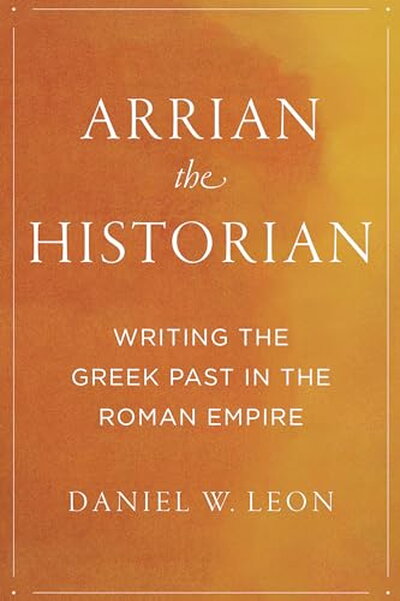
Daniel W. Leon, Arrian the Historian: Writing the Greek Past in the Roman Empire (University of Texas Press, 2021)
During the first centuries of the Roman Empire, Greek intellectuals wrote a great many texts modeled on the dialect and literature of Classical Athens, some 500 years prior. Among the most successful of these literary figures were sophists, whose highly influential display oratory has been the prevailing focus of scholarship on Roman Greece over the past fifty years. Often overlooked are the period’s historians, who spurned sophistic oral performance in favor of written accounts. One such author is Arrian of Nicomedia.
Daniel W. Leon examines the works of Arrian to show how the era's historians responded to their sophistic peers’ claims of authority and played a crucial role in theorizing the past at a time when knowledge of history was central to defining Greek cultural identity. Best known for his history of Alexander the Great, Arrian articulated a methodical approach to the study of the past and a notion of historical progress that established a continuous line of human activity leading to his present and imparting moral and political lessons. Using Arrian as a case study in Greek historiography, Leon demonstrates how the genre functioned during the Imperial Period and what it brings to the study of the Roman world in the second century.
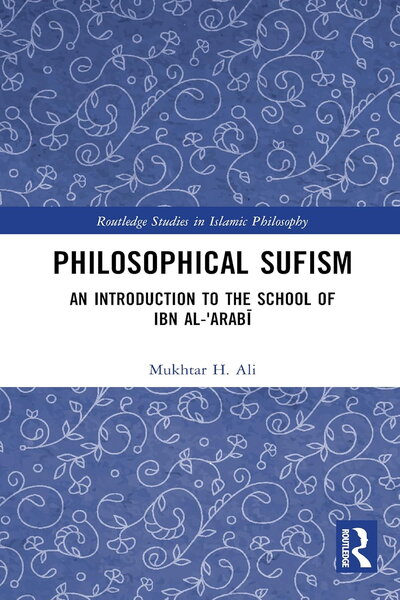
Mukhtar Hussain Ali, Philosophical Sufism: An Introduction to the School of Ibn al-'Arabi (Routledge, 2021)
Analyzing the intersection between Sufism and philosophy, this volume is a sweeping examination of the mystical philosophy of Muḥyī-l-Dīn Ibn al-ʿArabī (d. 637/1240), one of the most influential and original thinkers of the Islamic world. This book systematically covers Ibn al-ʿArabī’s ontology, theology, epistemology, teleology, spiritual anthropology and eschatology.
While philosophy uses deductive reasoning to discover the fundamental nature of existence and Sufism relies on spiritual experience, it was not until the school of Ibn al-ʿArabī that philosophy and Sufism converged into a single framework by elaborating spiritual doctrines in precise philosophical language. Contextualizing the historical development of Ibn al-ʿArabī’s school, the work draws from the earliest commentators of Ibn al-ʿArabī’s oeuvre, Ṣadr al-Dīn al-Qūnawī (d. 673/1274), ʿAbd al-Razzāq al-Kāshānī (d. ca. 730/1330) and Dawūd al-Qayṣarī (d. 751/1350), but also draws from the medieval heirs of his doctrines Sayyid Ḥaydar Āmulī (d. 787/1385), the pivotal intellectual and mystical figure of Persia who recast philosophical Sufism within the framework of Twelver Shīʿism and ʿAbd al-Raḥmān Jāmī (d. 898/1492), the key figure in the dissemination of Ibn al-ʿArabī’s ideas in the Persianate world as well as the Ottoman Empire, India, China and East Asia via Central Asia.
Lucidly written and comprehensive in scope, with careful treatments of the key authors, Philosophical Sufism is a highly accessible introductory text for students and researchers interested in Islam, philosophy, religion and the Middle East.
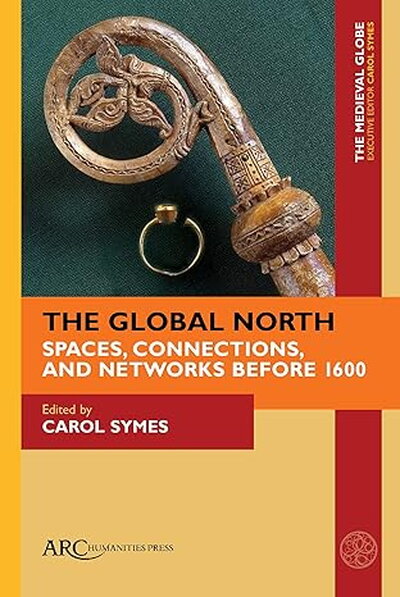
The Global North Spaces, Connections, and Networks before 1600, edited by Carol Symes (The Medieval Globe Books: Arc Humanities Press, 2021)
When Janet Abu-Lughod sketched the contours of a medieval “world system” in 1989, she located most communication networks in the southern hemisphere. In recent decades, however, new trends in research and new forms of evidence have complicated, enriched, and expanded this picture, geographically and chronologically. We now know that vast portions of the world were interconnected throughout the Middle Ages and, moreover, that the entire circumpolar North was a contact zone in its own right. In this volume, scholars from a range of disciplines explore the boreal globe from the late Iron Age to the seventeenth century, offering fresh perspectives that cross the frontiers of national historiographies and presenting new research on migration, trade, mapping, cultural exchange, and the interactions of humans with their environment.
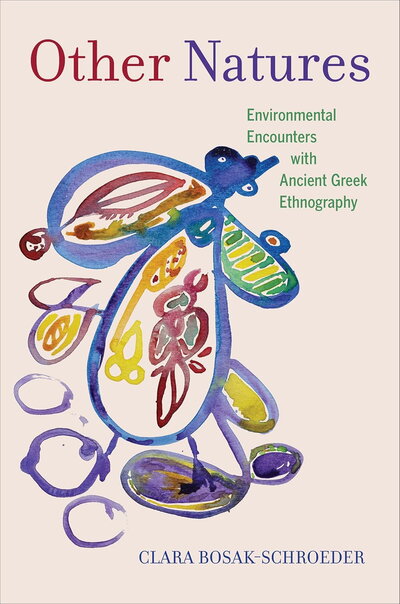
Clara Bosak-Schroeder, Other Natures: Environmental Encounters with Ancient Greek Ethnography (University of California Press, 2020)
Ancient Greek ethnographies—descriptions of other peoples—provide unique resources for understanding ancient environmental thought and assumptions, as well as anxieties, about how humans relate to nature as a whole. In Other Natures, Clara Bosak-Schroeder examines the works of seminal authors such as Herodotus and Diodorus Siculus to persuasively demonstrate how non-Greek communities affected and were in turn deeply affected by their local animals, plants, climate, and landscape. She shows that these authors used ethnographies of non-Greek peoples to explore, question, and challenge how Greeks ate, procreated, nurtured, collaborated, accumulated, and consumed. In recuperating this important strain of ancient thought, Bosak-Schroeder makes it newly relevant to vital questions and ideas being posed in the environmental humanities today, arguing that human life and well-being are inextricable from the life and well-being of the nonhuman world. By turning to such ancient ethnographies, we can uncover important models for confronting environmental crisis.

Brian Walters, The Deaths of the Republic: Imagery of the Body Politic in Ciceronian Rome (Oxford University Press, 2020)
That the Roman republic died is a commonplace often repeated. In extant literature, the notion is first given form in the works of the orator Cicero (106-43 BCE) and his contemporaries, though the scattered fragments of orators and historians from the earlier republic suggest that the idea was hardly new. In speeches, letters, philosophical tracts, poems, and histories, Cicero and his peers obsessed over the illnesses, disfigurements, and deaths that were imagined to have beset their body politic, portraying rivals as horrific diseases or accusing opponents of butchering and even murdering the state. Body-political imagery had long enjoyed popularity among Greek authors, but these earlier images appear muted in comparison and it is only in the republic that the body first becomes fully articulated as a means for imagining the political community. In the works of republican authors is found a state endowed with nervi, blood, breath, limbs, and organs; a body beaten, wounded, disfigured, and infected; one with scars, hopes, desires, and fears; that can die, be killed, or kill in turn. Such images have often been discussed in isolation, yet this is the first book to offer a sustained examination of republican imagery of the body politic, with particular emphasis on the use of bodily-political images as tools of persuasion and the impact they exerted on the politics of Rome in the first century BCE.
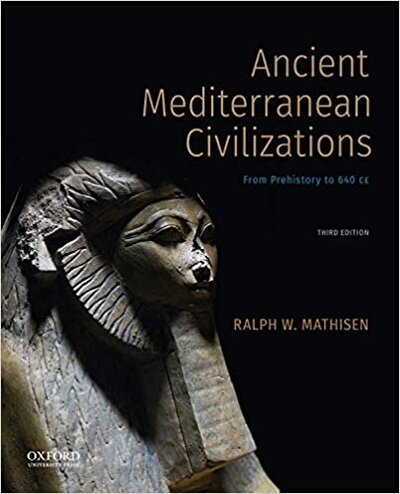
Ralph W. Mathisen, Ancient Mediterranean Civilizations: From Prehistory to 640 CE (Oxford University Press, 2020)
Challenging the stereotypes and myths that typically characterize students' understanding of antiquity, Ancient Mediterranean Civilizations: From Prehistory to 640 CE, Third Edition, focuses on continuity and connections, along with cultural diffusion and cultural diversity, to show how history is a cumulative process and that numerous similar themes recur in different times and places. The text also explores sensitive issues and debates including attitudes toward race, ethnicity, and tolerance; gender issues and roles; slavery; social mobility; religion; political evolution; the nature of government; and imperialism.
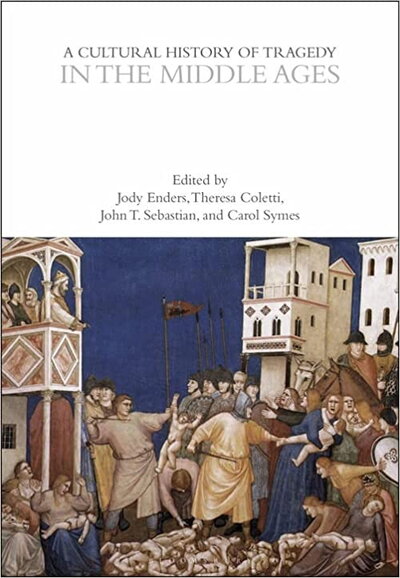
A Cultural History of Tragedy In The Middle Ages, ediited by Jody Enders, Theresa Coletti, John T. Sebastian, and Carol Symes (Bloomsbury Academic, 2020)
Historically, scholars have largely endorsed the truism that there was no such thing as medieval tragedy, a genre long believed to have died between 500 and 1500 as it awaited its literal Renaissance rebirth. Now, for the first time, a distinguished group of authors comes forward to recalibrate our thinking by rewriting the cultural history of tragedy in the Middle Ages. Reports of the so-called death of medieval tragedy, they argue, have been greatly exaggerated; and, for the Middle Ages, the stakes couldn’t be higher. Eight essays offer a blueprint for future study as they take up the extensive but much-neglected medieval engagement with tragic genres, modes, and performances from the vantage points of gender, politics, theology, history, social theory, anthropology, philosophy, economics, and media studies. The result? A recuperated medieval tragedy that is as much a branch of literature as it is of theology, politics, law, or ethics and which, at long last, rejoins the millennium-long conversation about one of the world’s most enduring art forms.
Each chapter takes a different theme as its focus: forms and media; sites of performance and circulation; communities of production and consumption; philosophy and social theory; religion, ritual and myth; politics of city and nation; society and family, and gender and sexuality. As a whole, the volume provides a panoramic view rich in spatial, temporal, formal, and contextual concerns.
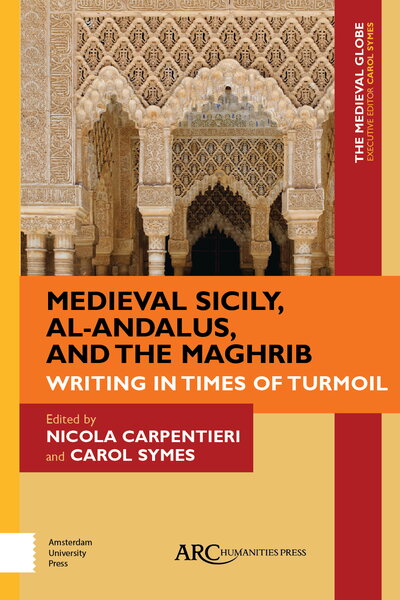
Medieval Sicily, al-Andalus, and the Maghrib: Writing in Times of Turmoil, edited by Nicola Carpentieri and Carol Symes (The Medieval Globe Books: Arc Humanities Press, 2020)
This book explores a millennium of literary exchanges among the peoples of the Maghrib, or westernmost strongholds of medieval Islam. In the seventh century, Muslim expansion into the western Mediterranean initiated a new phase in the layering of heterogeneous peoples and languages in this contact zone: Arabs and Berbers, Christians and Jews, Sunnī and Shīʿa Muslims, Greeks and Latins all helped shape identities, hybrid genealogies of knowledge, and political alliances. These essays excavate the literary artefacts produced in these times of turmoil, offering new perspectives on the intellectual networks and traditions that proved instrumental in overcoming the often traumatic transitions among political and/or religious regimes.

Curtis Perry, Shakespeare and Senecan Tragedy (Cambridge University Press, 2020)
Shakespeare's tragic characters have often been seen as forerunners of modern personhood. It has been assumed that Shakespeare was able to invent such lifelike figures in part because of his freedom from the restrictions of classical form. Curtis Perry instead argues that characters such as Hamlet and King Lear have seemed modern to us in part because they are so robustly connected to the tradition of Senecan tragedy. Resituating Shakespearean tragedy in this way - as backward looking as well as forward looking - makes it possible to recover a crucial political dimension. Shakespeare saw Seneca as a representative voice from post-republican Rome: in plays such as Coriolanus and Othello he uses Senecan modes of characterization to explore questions of identity in relation to failures of republican community. This study has important implications for the way we understand character, community, and alterity in early modern drama.

Mauro Nobili, Sultan, Caliph, and the Renewer of the Faith: Aḥmad Lobbo, the Tārīkh al-fattāsh and the Making of an Islamic State in West Africa (Cambridge University Press, 2020)
The Tārīkh al-fattāsh is one of the most important and celebrated sources for the history of pre-colonial West Africa, yet it has confounded scholars for decades with its inconsistencies and questions surrounding its authorship. In this study, Mauro Nobili examines and challenges existing theories on the chronicle, arguing that much of what we have presumed about the work is deeply flawed. Making extensive use of previously unpublished Arabic sources, Nobili demonstrates that the Tārīkh al-fattāsh was in fact written in the nineteenth century by a Fulani scholar, Nūḥ b. al-Ṭāhir, who modified pre-existing historiographical material as a political project in legitimation of the West African Islamic state known as the Caliphate of Ḥamdallāhi and its founding leader Aḥmad Lobbo. Contextualizing its production within the broader development of the religious and political landscape of West Africa, this study represents a significant moment in the study of West African history and of the evolution of Arabic historical literature in Timbuktu and its surrounding regions.
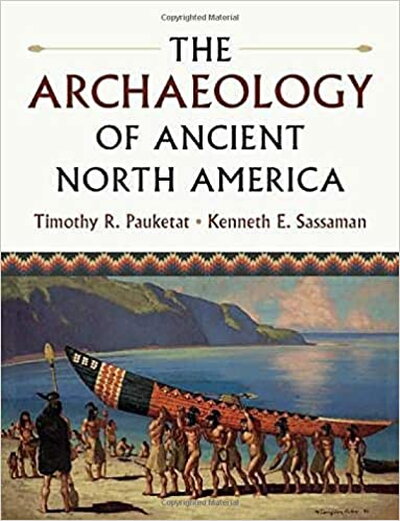
Timothy R. Pauketat and Kenneth E Sassaman, The Archaeology of Ancient North America (Cambridge University Press, 2020)
This volume surveys the archaeology of Native North Americans from their arrival on the continent 15,000 years ago up to contact with European colonizers. Offering rich descriptions of monumental structures, domestic architecture, vibrant objects, and spiritual forces, Timothy R. Pauketat and Kenneth E. Sassaman show how indigenous people shaped both their history and North America's many varied environments. They place the student in the past as they trace how Native Americans dealt with challenges such as climate change, the rise of social hierarchies and political power, and ethnic conflict. Written in a clear and engaging style with a compelling narrative, The Archaeology of Ancient North America presents the grand historical themes and intimate stories of ancient Americans in full, living color.

D. Fairchild Ruggles, Tree of Pearls: The Extraordinary Architectural Patronage of the 13th-Century Egyptian Slave-Queen Shajar al-Durr (Oxford University Press, 2020)
The woman known as "Tree of Pearls" ruled Egypt in the summer of 1250. A rare case of a woman sultan, her reign marked the shift from the Ayyubid to the Mamluk dynasty, and her architectural patronage of two building complexes had a lasting impact on Cairo and on Islamic architecture. Rising to power from slave origins, Tree of Pearls-her name in Arabic is Shajar al-Durr-used her wealth and power to add a tomb to the urban madrasa (college) that had been built by her husband, Sultan Salih, and with this innovation, madrasas and many other charitably endowed architectural complexes became commemorative monuments, a practice that remains widespread today. This was the first occasion in Cairo in which a secular patron's relationship to his architectural foundation was reified through the actual presence of his body. The tomb thus profoundly transformed the relationship between architecture and its patron, emphasizing and emblematizing his historical presence. Indeed, the characteristic domed skyline of Cairo that we see today is shaped by such domes that have kept the memory of their named patrons visible to the public eye. This dramatic transformation, in which architecture came to embody human identity, was made possible by the sultan-queen Shajar al-Durr, a woman who began her career as a mere slave-concubine. Her path-breaking patronage contradicts the prevailing assumption among historians of Islam that there was no distinctive female voice in art and architecture.
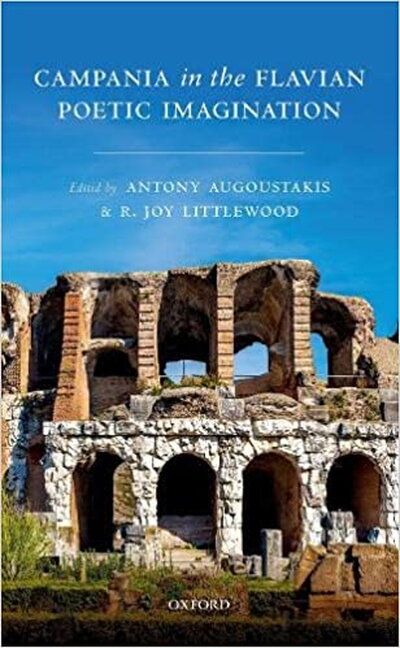
Campania in the Flavian Poetic Imagination, eds. Antony Augoustakis and R. Joy Littlewood (Oxford University Press, 2019)
The region of Campania with its fertility and volcanic landscape was greatly influential on the Roman cultural imagination. The Bay of Naples was a centre outside the city of Rome, a place of otium, leisure and quiet, repose and literary productivity. And yet this is also a place of danger: Vesuvius inspires the inhabitants with fear and awe and, in addition to the majestic presence of the mountain, the Phlegraean Fields evoke the story of the gigantomachy, whilst sulphurous lakes invite entry to the Underworld. For the Flavian writers, in particular, Campania becomes a locus for literary activity and geographical disaster. In 79 CE, the eruption of Vesuvius annihilates a great expanse of the region, burying under a mass of ash and lava the cities of Pompeii, Herculaneum, and Stabiae. In the aftermath of such tragedy the writers examined in this volume, Martial, Silius Italicus, Statius, and Valerius Flaccus, continue to live, work, and write about Campania, an alluring region of luxury and peril.
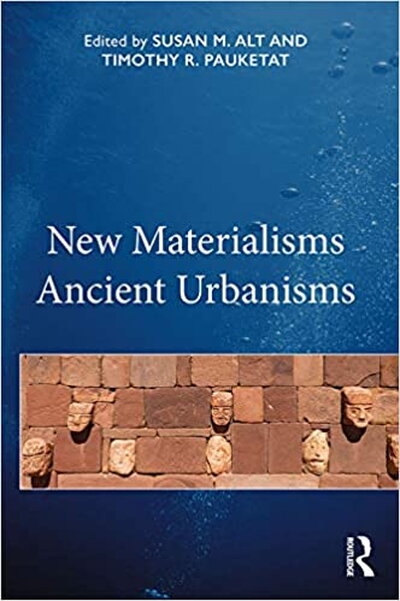
New Materialisms Ancient Urbanisms, eds. Susan M. Alt and Timothy R. Pauketat (Routledge, 2019)
The future of humanity is urban, and knowledge of urbanism's deep past is critical for us all to navigate that future. The time has come for archaeologists to rethink this global phenomenon by asking what urbanism is and, more to the point, was. Can we truly understand ancient urbanism by only asking after the human element, or were the properties and qualities of landscapes, materials, and atmospheres equally causal? The ten authors of New Materialisms Ancient Urbanisms seek less anthropocentric answers to questions about the historical relationships between urbanism and humanity in Africa, Asia, and the Americas. They analyze the movements and flows of materials, things, phenomena, and beings--human and otherwise--as these were assembled to produce the kinds of complex, dense, and stratified relationships that we today label urban. In so doing, the book emerges as a work of both theory and historical anthropology. It breaks new ground in the archaeology of urbanism, building on the latest 'New Materialist, ' 'relational-ontological, ' and 'realist' trends in social theory. This book challenges a new generation of students to think outside the box, and provides scholars of urbanism, archaeology and anthropology with a fresh perspective on the development of urban society.
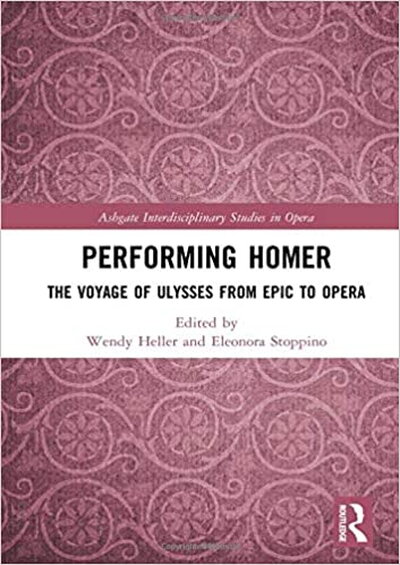
Performing Homer: The Voyage of Ulysses from Epic to Opera, edited by Eleonora Stoppino and Wendy Heller (Routledge Taylor & Francis Group, 2019)
The epic poems the Iliad and the Odyssey, attributed to Homer, are among the oldest surviving works of literature derived from oral performance. Deeply embedded in these works is the notion that they were intended to be heard: there is something musical about Homer's use of language and a vivid quality to his images that transcends the written page to create a theatrical experience for the listener. Indeed, it is precisely the theatrical quality of the poems that would inspire later interpreters to cast the Odyssey and the Iliad in a host of other media-novels, plays, poems, paintings, and even that most elaborate of all art forms, opera, exemplified by no less a work than Monteverdi's Il ritorno di Ulisse in patria. In Performing Homer: The Voyage of Ulysses from Epic to Opera, scholars in classics, drama, Italian literature, art history, and musicology explore the journey of Homer's Odyssey from ancient to modern times. The book traces the reception of the Odyssey though the Italian humanist sources—from Dante, Petrarch, and Ariosto—to the treatment of the tale not only by Monteverdi but also such composers as Elizabeth Jacquet de la Guerre, Gluck, and Alessandro Scarlatti, and the dramatic and poetic traditions thereafter by such modern writers as Derek Walcott and Margaret Atwood.
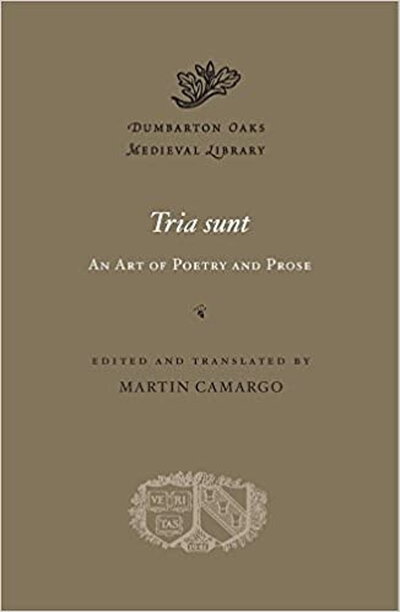
Tria sunt: An Art of Poetry and Prose, ed. Martin Camargo (Harvard University Press, 2019)
The Tria sunt, named for its opening words, was a widely used and highly ambitious book composed in England in the late fourteenth century during a revival of interest in the art of poetry and prose.
The backbone of this comprehensive guide to writing Latin texts is the wealth of illustrative and instructive sources compiled, including examples from classical authors such as Cicero and Horace as well as from medieval literature, and excerpts from other treatises of the same period by authors from Matthew of Vendôme through Gervase of Melkley. Topics treated at length include methods for beginning and ending a composition, techniques for expanding and abbreviating a text, varieties of figurative language, attributes of persons and actions, and the art of letter writing.
This anonymous treatise, related especially closely to work by Geoffrey of Vinsauf, served as a textbook for rhetorical composition at Oxford. Of all the major Latin arts of poetry and prose, it is the only one not previously edited or translated into English.
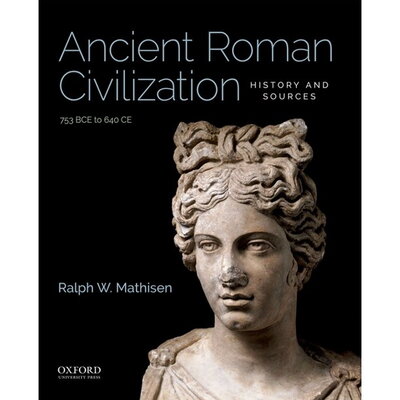
Ralph W Mathisen, Ancient Roman Civilization: History and Sources: 753 BCE to 640 CE (Oxford University Press, 2018)
Ancient Roman Civilization: History and Sources: 753 BCE to 640 CE integrates in a single volume both a historical narrative and parallel translated primary sources. The book's unifying theme of cultural confrontation--how the Romans interacted or engaged with a multitude of other Mediterranean, Asiatic, and African cultures--is interwoven throughout.
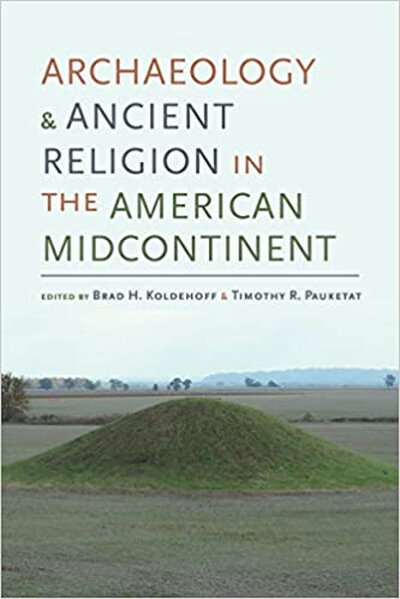
Archaeology and Ancient Religion in the American Midcontinent, edited by Brad Koldehoff and Timothy R. Pauketat (The University of Alabama Press, 2018)
Across North America, huge data accumulations derived from decades of cultural resource management studies, combined with old museum collections, provide archaeologists with unparalleled opportunities to explore new questions about the lives of ancient native peoples. For many years the topics of technology, economy, and political organization have received the most research attention, while ritual, religion, and symbolic expression have largely been ignored. This was often the case because researchers considered such topics beyond reach of their methods and data. In Archaeology and Ancient Religion in the American Midcontinent, editors Brad H. Koldehoff and Timothy R. Pauketat and their contributors demonstrate that this notion is outdated through their analyses of a series of large datasets from the midcontinent, ranging from tiny charred seeds to the cosmic alignments of mounds, they consider new questions about the religious practices and lives of native peoples. At the core of this volume are case studies that explore religious practices from the Cahokia area and surrounding Illinois uplands. Additional chapters explore these topics using data collected from sites and landscapes scattered along the Mississippi and Ohio River valleys. This innovative work facilitates a greater appreciation for, and understanding of, ancient native religious practices, especially their seamless connections to everyday life and livelihood. The contributors do not advocate for a reduced emphasis on technology, economy, and political organization; rather, they recommend expanding the scope of such studies to include considerations of how religious practices shaped the locations of sites, the character of artifacts, and the content and arrangement of sites and features. They also highlight analytical approaches that are applicable to archaeological datasets from across the Americas and beyond.
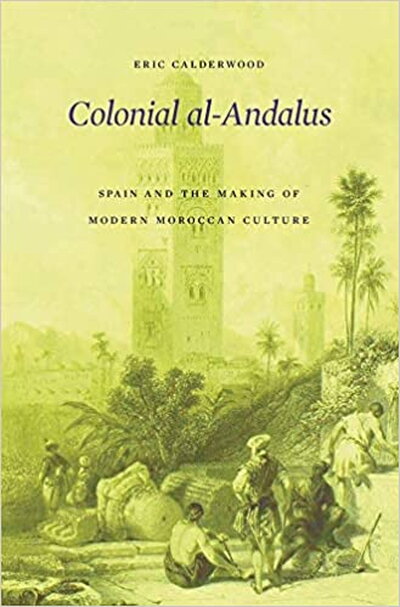
Eric Stickley Calderwood, Colonial al-Andalus: Spain and the Making of Modern Moroccan Culture (Belknap Press, 2018)
Through state-backed Catholicism, monolingualism, militarism, and dictatorship, Spain’s fascists earned their reputation for intolerance. It may therefore come as a surprise that 80,000 Moroccans fought at General Franco’s side in the 1930s. What brought these strange bedfellows together, Eric Calderwood argues, was a highly effective propaganda weapon: the legacy of medieval Muslim Iberia, known as al-Andalus. This legacy served to justify Spain’s colonization of Morocco and also to define the Moroccan national culture that supplanted colonial rule.
Writers of many political stripes have celebrated convivencia, the fabled “coexistence” of Christians, Muslims, and Jews in medieval Iberia. According to this widely-held view, modern Spain and Morocco are joined through their shared Andalusi past. Colonial al-Andalus traces this supposedly timeless narrative to the mid-1800s, when Spanish politicians and intellectuals first used it to press for Morocco’s colonization. Franco later harnessed convivencia to the benefit of Spain’s colonial program in Morocco. This shift precipitated an eloquent historical irony. As Moroccans embraced the Spanish insistence on Morocco’s Andalusi heritage, a Spanish idea about Morocco gradually became a Moroccan idea about Morocco.
Drawing on a rich archive of Spanish, Arabic, French, and Catalan sources—including literature, historiography, journalism, political speeches, schoolbooks, tourist brochures, and visual arts—Calderwood reconstructs the varied political career of convivencia and al-Andalus, showing how shared pasts become raw material for divergent contemporary ideologies, including Spanish fascism and Moroccan nationalism. Colonial al-Andalus exposes the limits of simplistic oppositions between European and Arab, Christian and Muslim, that shape current debates about European colonialism.
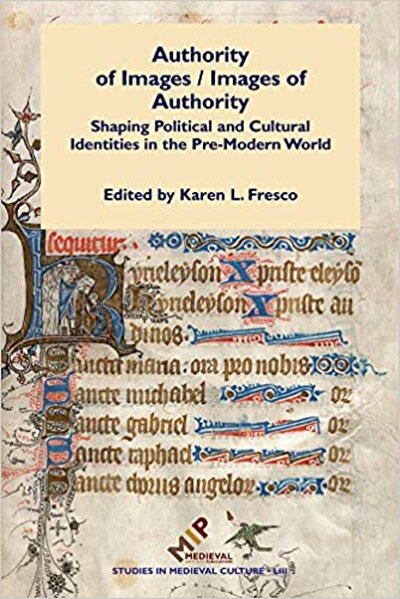
Authority of Images / Images of Authority: Shaping Political and Cultural Identities in the Pre-Modern World, ed. Karen L. Fresco (Medieval Institute Publications, 2017)
Focusing on language's political power, these essays discuss how representation, through language norms, plays and court spectacles, manipulations and adaptations of texts and images, both constitutes and reflects a cultural milieu. The volume brings together various disciplinary approaches, offering a complex appreciation of these questions. While a core of the essays focuses on France, the contributions engage a broad range of geographical contexts, from Byzantium to eastern Germany and England from the early centuries of the Common Era to the seventeenth century, revealing the prevalence and persistence of the key interconnected issues of images and authority.
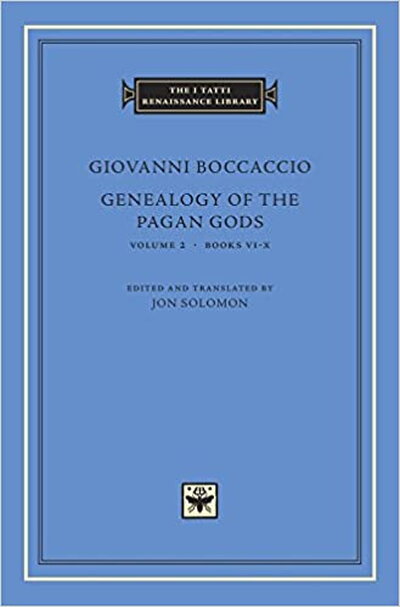
Giovanni Boccaccio, Genealogy of the Pagan Gods, Vol. 2, edited by Jon Solomon (Harvard University Press, 2017)
Genealogy of the Pagan Gods by Giovanni Boccaccio (1313–1375) is an ambitious work of humanistic scholarship whose goal is to plunder ancient and medieval literary sources so as to create a massive synthesis of Greek and Roman mythology. The work also contains a famous defense of the value of studying ancient pagan poetry in a Christian world.
The complete work in fifteen books contains a meticulously organized genealogical tree identifying approximately 950 Greco-Roman mythological figures. The scope is enormous: 723 chapters include over a thousand citations from 200 Greek, Roman, medieval, and Trecento authors. Throughout the Genealogy, Boccaccio deploys an array of allegorical, historical, and philological critiques of the ancient myths and their iconography.
Much more than a mere compilation of pagan myths, the Genealogy incorporates hundreds of excerpts from and comments on ancient poetry, illustrative of the new spirit of philological and cultural inquiry emerging in the early Renaissance. It is at once the most ambitious work of literary scholarship of the early Renaissance and a demonstration to contemporaries of the moral and cultural value of studying ancient poetry.
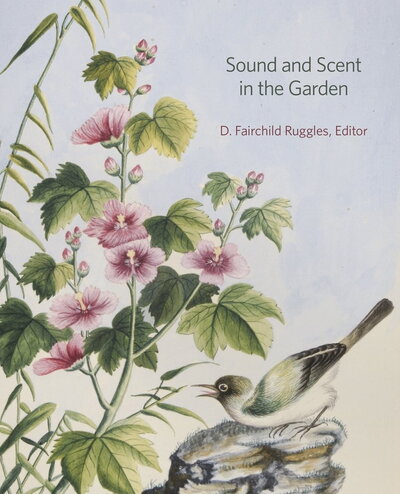
Sound and Scent in the Garden, edited by D Fairchild Ruggles (Harvard University Press, 2017)
While we often approach gardens as things to be seen—thus engaging the rational, intellectual part of the human brain—Sound and Scent in the Garden explores the more elusive experiences of sound and smell. These senses are important dimensions of garden design and performance and often have a powerful effect on the human body, yet they may also be ephemeral and difficult to study.
The contributors to the volume explore the sensory experience of gardens specifically as places where people encounter landscape in a staged manner, as a result of intentional design. How do the senses shape the experience of those places? In what ways are plants, gardens, and landscapes produced so as to stimulate the senses? What evidence do we have of historical sensory experiences? What is lost when we forget to acknowledge the sensory environment of the past or simply overlook its traces?
The volume demonstrates a wide variety of approaches to apply to the study of sensory history and illuminates this important dimension of the experience of gardens—past and present, East and West.

Marianne E. Kalinke, Stories Set Forth with Fair Words: The Evolution of Medieval Romance in Iceland (University of Wales Press, 2017)
This book is an investigation of the foundation and evolution of romance in Iceland. The narrative type arose from the introduction of French narratives into the alien literary environment of Iceland and the acculturation of the import to indigenous literary traditions. The study focuses on the oldest Icelandic copies of three chansons de geste and four of the earliest indigenous romances, both types transmitted in an Icelandic codex from around 1300. The impact of the translated epic poems on the origin and development of the Icelandic romances was considerable, yet they have been largely neglected by scholars in favour of the courtly romances. This study attests the role played by the epic poems in the composition of romance in Iceland, which introduced the motifs of the aggressive female wooer and of Christian-heathen conflict.
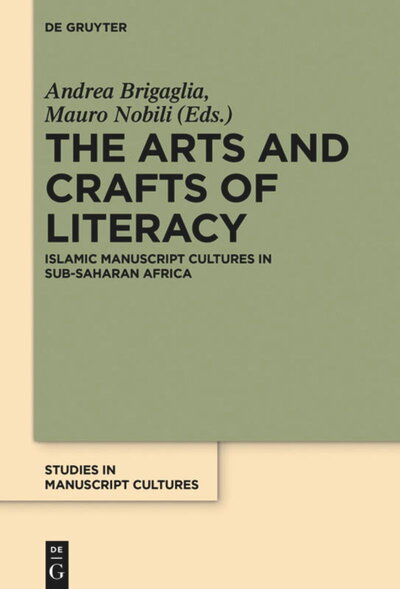
The Arts and Crafts of Literacy: Islamic Manuscript Cultures in Sub-Saharan Africa, eds. Andrea Brigaglia and Mauro Nobili (De Gruyter, 2017)
During the last two decades, the (re-)discovery of thousands of manuscripts in different regions of sub-Saharan Africa has questioned the long-standing approach of Africa as a continent only characterized by orality and legitimately assigned to the continent the status of a civilization of written literacy.
However, most of the existing studies mainly aim at serving literary and historical purposes, and focus only on the textual dimension of the manuscripts. This book advances on the contrary a holistic approach to the study of these manuscripts and gather contributions on the different dimensions of the manuscript, i.e. the materials, the technologies, the practices and the communities involved in the production, commercialization, circulation, preservation and consumption.
The originality of this book is found in its methodological approach as well as its comparative geographic focus, presenting studies on a continental scale, including regions formerly neglected by existing scholarship, provides a unique opportunity to expand our still scanty knowledge of the different manuscript cultures that the African continent has developed and that often can still be considered as living traditions.
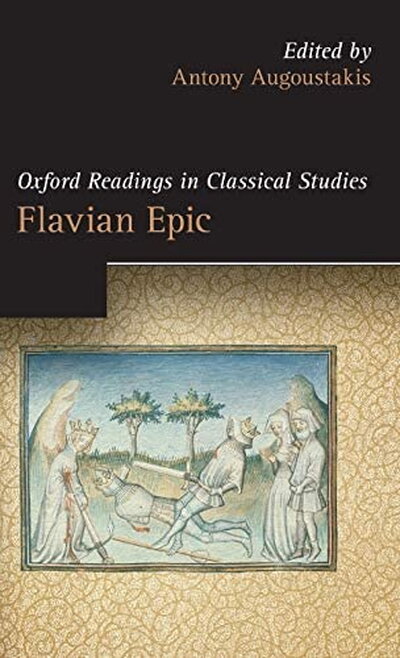
Flavian Epic, ed.ited by Antony Augoustakis (Oxford University Press, 2016)
The epics of the three Flavian poets--Silius Italicus, Statius, and Valerius Flaccus--have, in recent times, attracted the attention of scholars, who have re-evaluated the particular merits of Flavian poetry as far more than imitation of the traditional norms and patterns. Drawn from sixty years of scholarship, this edited collection is the first volume to collate the most influential modern academic writings on Flavian epic poetry, revised and updated to provide both scholars and students alike with a broad yet comprehensive overview of the field.
A wide range of topics receive coverage, and analysis and interpretation of individual poems are integrated throughout. The plurality of the critical voices included in the volume presents a much-needed variety of approaches, which are used to tackle questions of intertextuality, gender, poetics, and the social and political context of the period. In doing so, the volume demonstrates that by engaging in a complex and challenging intertextual dialogue with their literary predecessors, the innovative epics of the Flavian poets respond to contemporary needs, expressing overt praise, or covert anxiety, towards imperial rule and the empire.
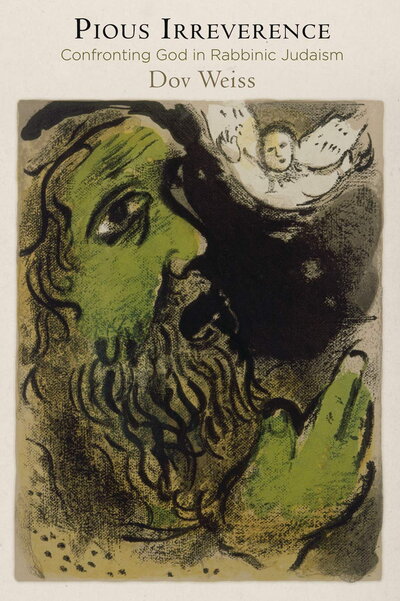
Dov Weiss, Pious Irreverence: Confronting God in Rabbinic Judaism (University of Pennsylvania Press, 2016)
Judaism is often described as a religion that tolerates, even celebrates arguments with God. Unlike Christianity and Islam, it is said, Judaism endorses a tradition of protest as first expressed in the biblical stories of Abraham, Job, and Jeremiah. In Pious Irreverence, Dov Weiss has written the first scholarly study of the premodern roots of this distinctively Jewish theology of protest, examining its origins and development in the rabbinic age.
Weiss argues that this particular Jewish relationship to the divine is rooted in the most canonical of rabbinic texts even as he demonstrates that in ancient Judaism the idea of debating God was itself a matter of debate. By elucidating competing views and exploring their theological assumptions, the book challenges the scholarly claim that the early rabbis conceived of God as a morally perfect being whose goodness had to be defended in the face of biblical accounts of unethical divine action. Pious Irreverence examines the ways in which the rabbis searched the words of the Torah for hidden meanings that could grant them the moral authority to express doubt about, and frustration with, the biblical God. Using characters from the Bible as their mouthpieces, they often challenged God's behavior, even in a few remarkable instances, envisioning God conceding error, declaring to the protestor, "You have taught Me something; I will nullify My decree and accept your word."
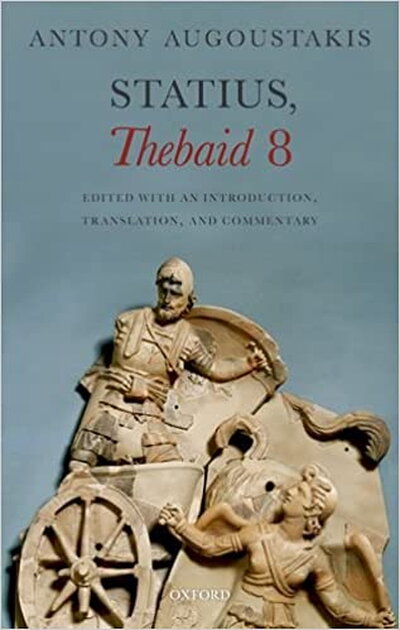
Statius' Thebaid 8: Edited with an Introduction, Translation, and Commentary, ed. Antony Augoustakis (Oxford University Press, 2016)
In this volume, Augoustakis presents the first full-length edition of Thebaid 8, with text and apparatus criticus, and an English translation. A detailed introduction discusses the Argive/Theban myth in the Greek and Roman literary tradition and art, as well as the reception of the book in subsequent centuries, especially in Dante's Divine Comedy. The accompanying commentary provides useful notes which explore questions of interpretation and Statius' language and literary craft, with particular emphasis on the exploitation of various Greek and Latin intertexts in Statius' poetry.
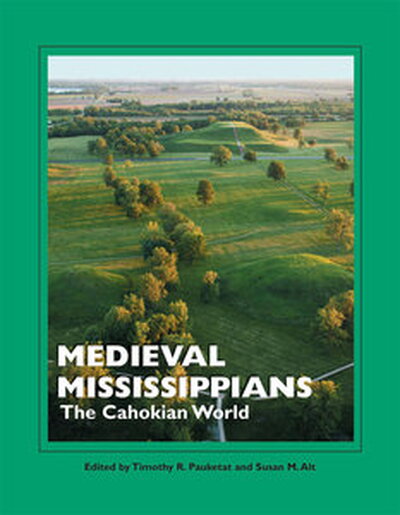
Medieval Mississippians, ed. Timothy Pauketat (with Susan A. Alt, Indiana Univ) (SAR Press, 2015)
Medieval Mississippians, the eighth volume in the award-winning Popular Archaeology Series, introduces a key historical period in pre-Columbian eastern North America—the “Mississippian” era—via a series of colorful chapters on places, practices, and peoples written from Native American and non-Native perspectives on the past. The volume lays out the basic contours of the early centuries of this era (AD 1000–1300) in the Mississippian heartland, making connections to later centuries and contemporary peoples. Cahokia the place and Cahokian social history undergird the book, but Mississippian material culture, landscapes, and descendants are highlighted, presenting a balanced view of the Mississippian world.
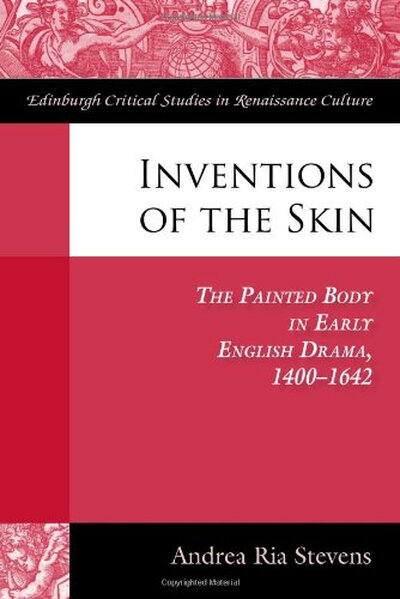
Andrea Stevens, Inventions of the Skin: The Painted Body in Early English Drama 1400- 1642 (Edinburgh Univ. Press, 2013)
Inventions of the Skin illuminates a history of the stage technology of paint that extends backward to the 1460s York cycle and forward to the 1630s. Organized as a series of studies, the four chapters of this book examine goldface and divinity in York's Corpus Christi play, with special attention to the pageant representing The Transfiguration of Christ; bloodiness in Elizabethan and Jacobean drama, specifically blood's unexpected role as a device for disguise in plays such as Look About You (anon.) and Shakespeare's Coriolanus; racial masquerade within seventeenth-century court performances and popular plays, from Ben Jonson's Masque of Blackness to William Berkeley's The Lost Lady; and finally whiteface, death, and "stoniness" in Thomas Middleton's The Second Maiden’s Tragedy and Shakespeare's The Winter’s Tale. Recovering a crucial grammar of theatrical representation, this book argues that the onstage embodiment of characters—not just the words written for them to speak—forms an important and overlooked aspect of stage representation.

Ritual and Religion in Flavian Epic, ed. Antony Augoustakis (Oxford Univ. Press, 2013)
This edited collection addresses the role of ritual representations and religion in the epic poems of the Flavian period (69-96 CE): Valerius Flaccus' Argonautica, Silius Italicus' Punica, Statius' Thebaid, and the unfinished Achilleid. Drawing on various modern studies on religion and ritual, and the relationship between literature and religion in the Greco-Roman world, it explores how we can interpret the poets' use of the relationship between gods and humans, cults and rituals, religious activities, and the role of the seer / prophet and his identification with poetry.
Divided into three major sections, the volume includes essays on the most important religious activities (prophecy or augury, prayers and hymns) and the relationship between religion and political power under the Flavian emperors. It also addresses specific episodes in Flavian epic which focus on religious activities associated with the dead and the Underworld, such as purification, necromancy, katabasis, suicide, and burial. It finally explores the role of gender in ritual and religion.
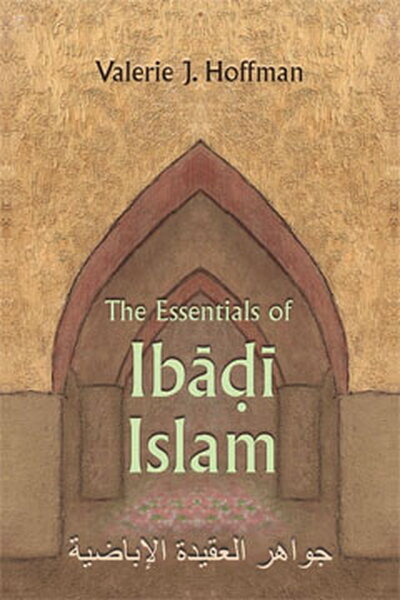
Valerie J. Hoffman, Essentials of Ibadi Islam (Syracuse University Press, 2013)
"Ibadi Islam played a pivotal role in the history of Islamic thought and practice, and continues to be an influential force in the contemporary Middle East and Africa. This book is of real importance to the study of Islam and religions in general."—Brannon Wheeler, author of Mecca and Eden: Ritual, Relics, and Territory in Islam

Translating the Middle Ages, edited by Karen Fresco and Charles D. Wright (Ashgate, 2012)
Drawing on approaches from literary studies, history, linguistics, and art history, and ranging from Late Antiquity to the sixteenth century, this collection views 'translation' broadly as the adaptation and transmission of cultural inheritance. The essays explore translation in a variety of sources from manuscript to print culture and the creation of lexical databases. Several essays look at the practice of textual translation across languages, including the vernacularization of Latin literature in England, France, and Italy; the translation of Greek and Hebrew scientific terms into Arabic; and the use of Hebrew terms in anti-Jewish and anti-Muslim polemics. Other essays examine medieval translators' views and performance of translation, looking at Lydgate's translation of Greek myths through mental images rendered through rhetorical figures or at how printing transformed the rhetoric of intervernacular translation of chivalric romances. This collection also demonstrates translation as a key element in the construction of cultural and political identity in the Fet des Romains and Chester Whitsun Plays, and in the papacy's efforts to compete with Byzantium by controlling the translation of Greek writings.
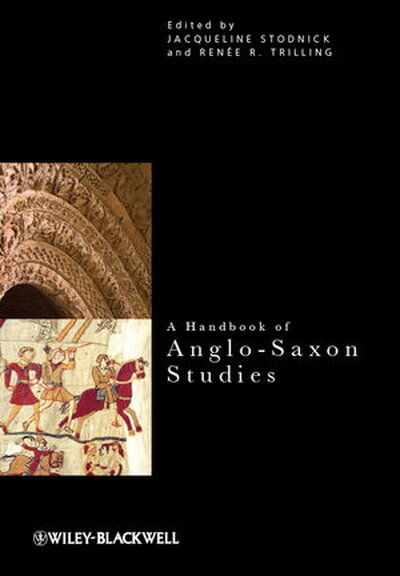
A Handbook of Anglo-Saxon Studies, ed. Jacqueline Stodnick and Renée Trilling (Wiley, 2012)
“Neither Modern Critical Theory nor Anglo-Saxon Studies is past its ‘best before’ date. The contributions to this book combine authoritative knowledge of many aspects of Anglo-Saxon culture with a diversity of interpretative perspectives. Meticulous analysis of the material within a framework of concentrated, reflective approaches continues to generate stimulating new insights and appreciation.”—John Hines, Cardiff University
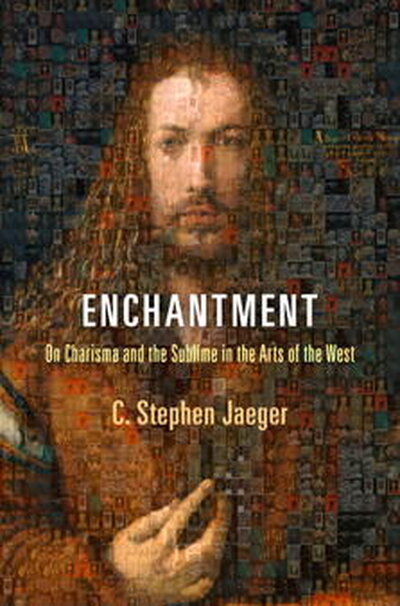
C. Stephen Jaeger, Enchantment: On Charisma and the Sublime in the Arts of the West (University of Pennsylvania Press, 2012)
"C. Stephen Jaeger's magnificent, generous, and wide-ranging study has at its heart all that which is life-affirming. At every turn we encounter vigorous, eloquent, and intellectually consistent challenges to the division of art and experience. Readers in and between many disciplines will find this deeply perceptive account of the magical workings of enchantment, charisma, and the sublime in texts, images and bodies, empowering and uplifting. It cannot fail to influence the next generation of thought about the arts and media more generally."--Paul Binski, University of Cambridge

Marianne Kalinke, Norse Romance I: The Tristan Legend; II: The Knights of the Round Table; III: Hærra Ivan (paperback reissues, Boydell & Brewer, 2012)
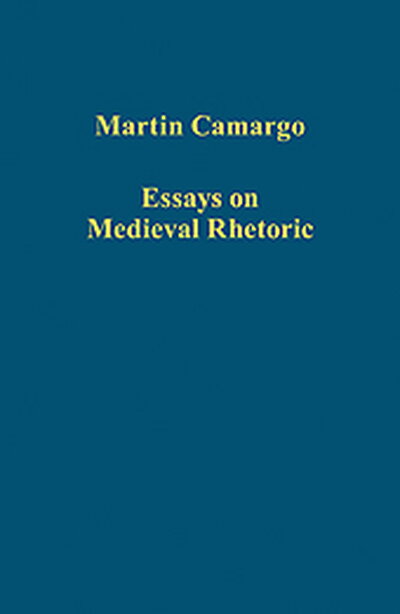
Martin Camargo, Essays on Medieval Rhetoric (Ashgate, 2012)
Reprint of thirteen of Martin Camargo's essays in the Variorum Collected Studies Series.
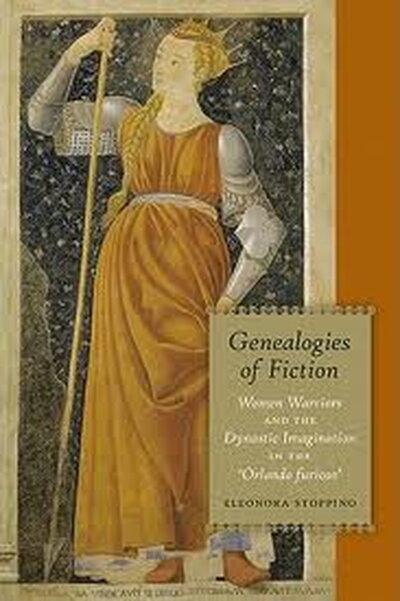
Eleonora Stoppino, Genealogies of Fiction: Women Warriors and the Dynastic Imagination in the "Orlando furioso" (Fordham Univ. Press, 2011)
Tracing the formation of the character of the warrior woman, from the amazon to Bradamante, the book analyzes the process of gender construction in early modern Italy. By reading the tension between the representations of women as fighters, lovers, and mothers, this study shows how the warrior woman is a symbolic center for the construction of legitimacy in the complex web of fears and expectations of the Northern Italian Renaissance court.
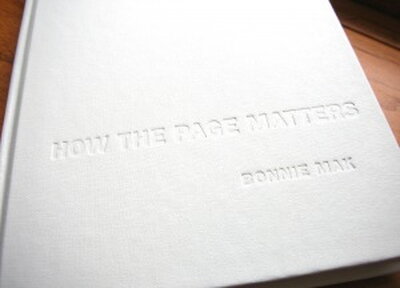
Bonnie Mak, How the Page Matters (University of Toronto Press, 2011)
From handwritten texts to online books, the page has been a standard interface for transmitting knowledge for over two millennia. It is also a dynamic device, readily transformed to suit the needs of contemporary readers. In How the Page Matters, Bonnie Mak explores how changing technology has affected the reception of visual and written information.
Mak examines the fifteenth-century Latin text Controversia de nobilitate in three forms: as a manuscript, a printed work, and a digital edition. Transcending boundaries of time and language, How the Page Matters connects technology with tradition using innovative new media theories. While historicizing contemporary digital culture and asking how on-screen combinations of image and text affect the way conveyed information is understood, Mak's elegant analysis proves both the timeliness of studying interface design and the persistence of the page as a communication mechanism.
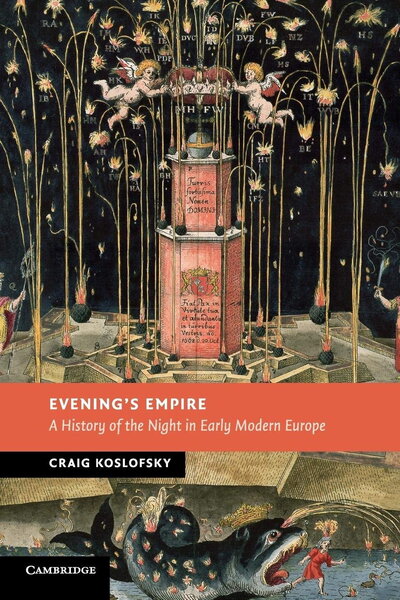
Craig Koslofsky, Evening's Empire: A History of the Night in Early Modern Europe (Cambridge University Press, 2011)
What does it mean to write a history of the night? Evening's Empire is a fascinating study of the myriad ways in which early modern people understood, experienced, and transformed the night. Using diaries, letters, and legal records together with representations of the night in early modern religion, literature and art, Craig Koslofsky opens up an entirely new perspective on early modern Europe. He shows how princes, courtiers, burghers and common people 'nocturnalized' political expression, the public sphere and the use of daily time. Fear of the night was now mingled with improved opportunities for labour and leisure: the modern night was beginning to assume its characteristic shape. Evening's Empire takes the evocative history of the night into early modern politics, culture and society, revealing its importance to key themes from witchcraft, piety, and gender to colonization, race, and the Enlightenment.
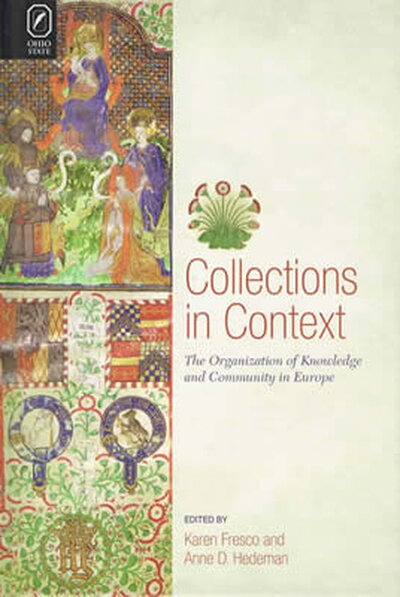
Collections in Context: The Organization of Knowledge and Community in Europe, edited Karen Fresco and Anne D. Hedeman (Ohio State Univ. Press, 2010)
Includes fourteen essays drawn from a Medieval Studies conference at the University of Illinois and features contributions from seven UIUC scholars, including editors Karen Fresco (French) and Anne D. Hedeman (Art History, retired) as well as Paula Carns (University Library), Erin Donovan (Art History), Marcus Keller (French), Eleonora Stoppino (Italian, Spanish & Portuguese), and Carol Symes (History).
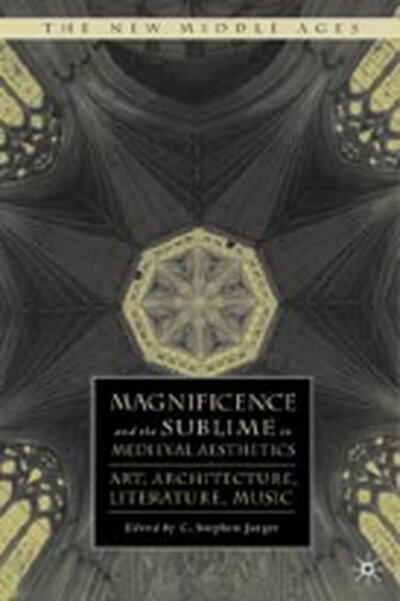
Magnificence and the Sublime in Medieval Aesthetics: Art, Architecture, Literature, Music, ed. C. Stephen Jaeger (New York: Palgrave Macmillan, 2010)
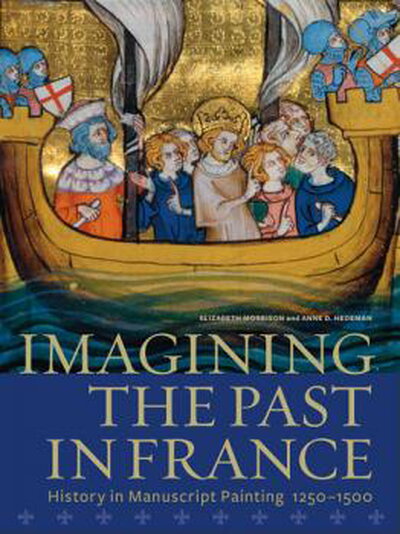
Imagining the Past in France: History in Manuscript Painting, 1250-1500, ed. Anne D. Hedeman and Elizabeth Morrison (J. Paul Getty Museum) (Getty Museum, 2010)